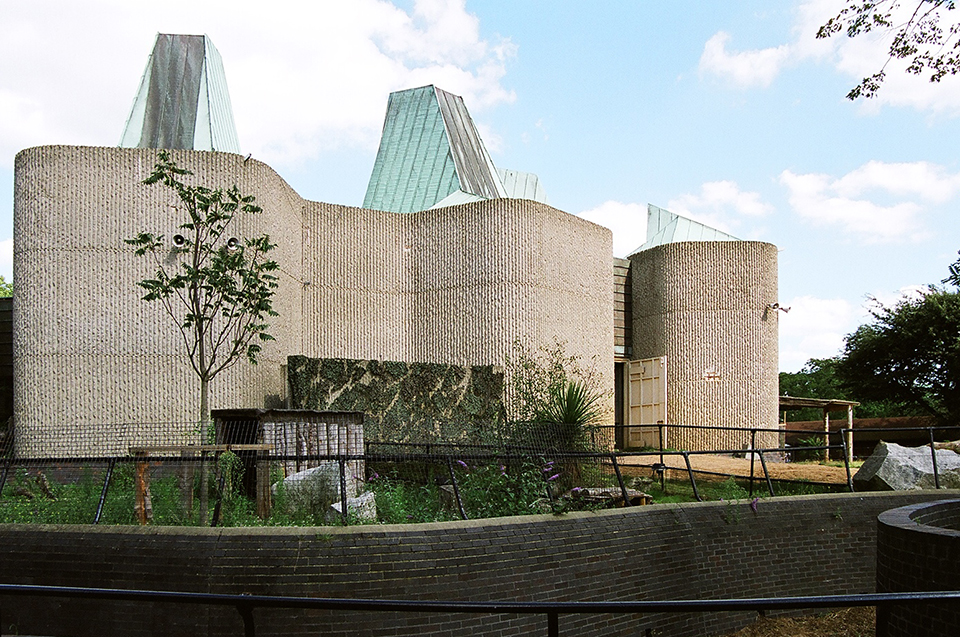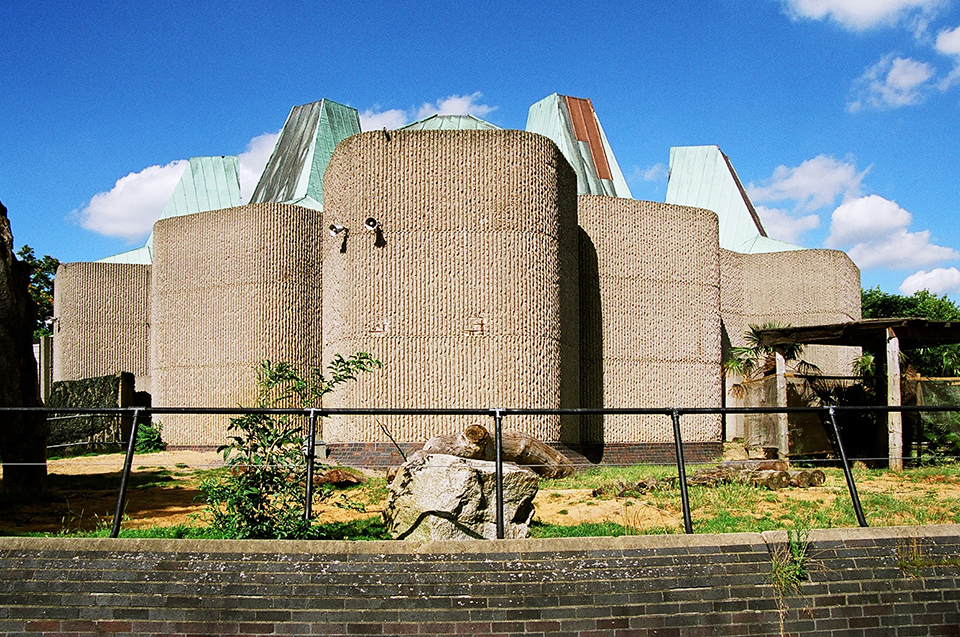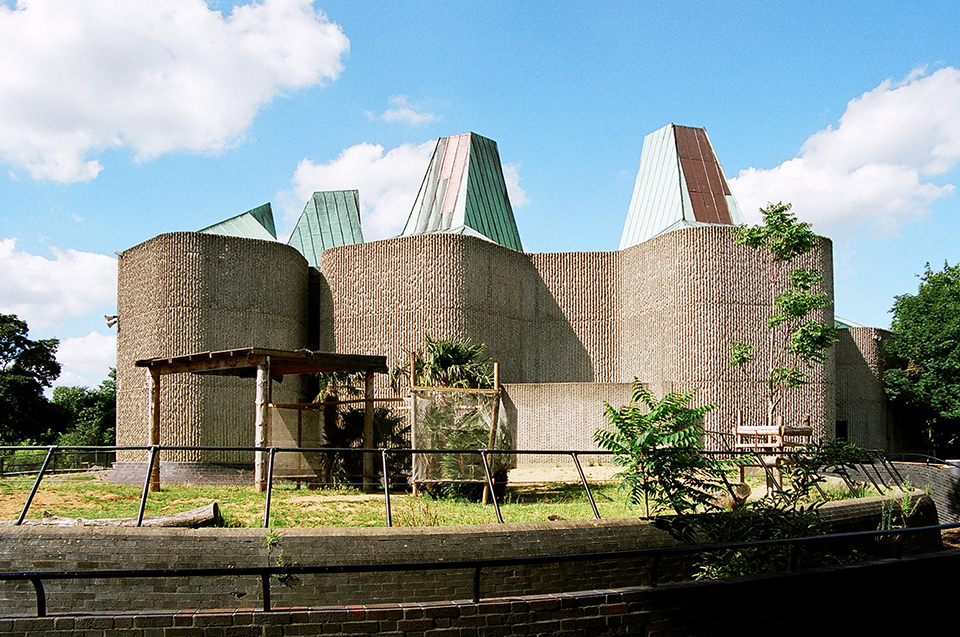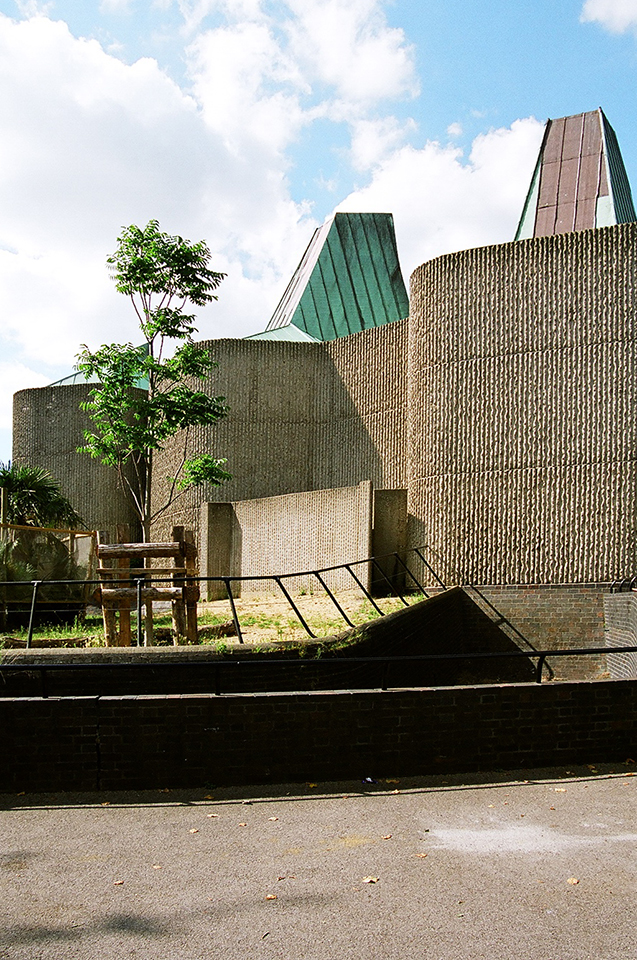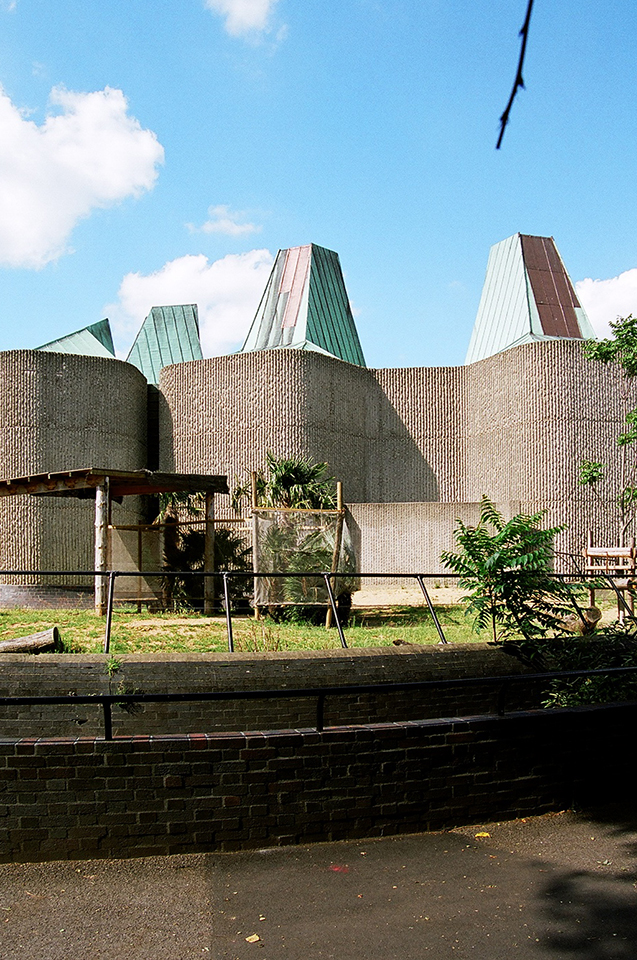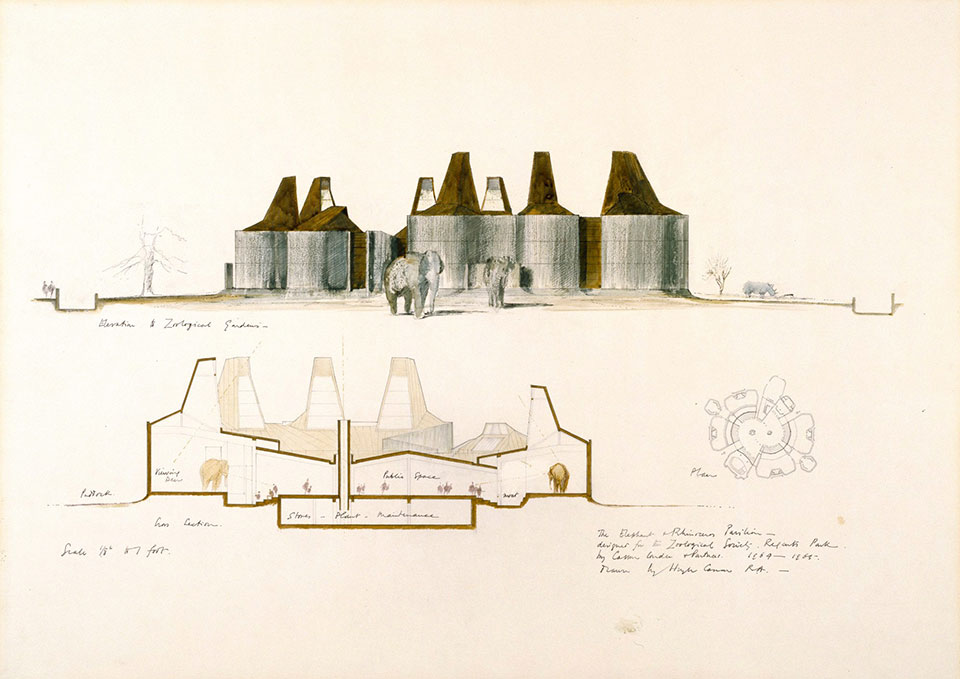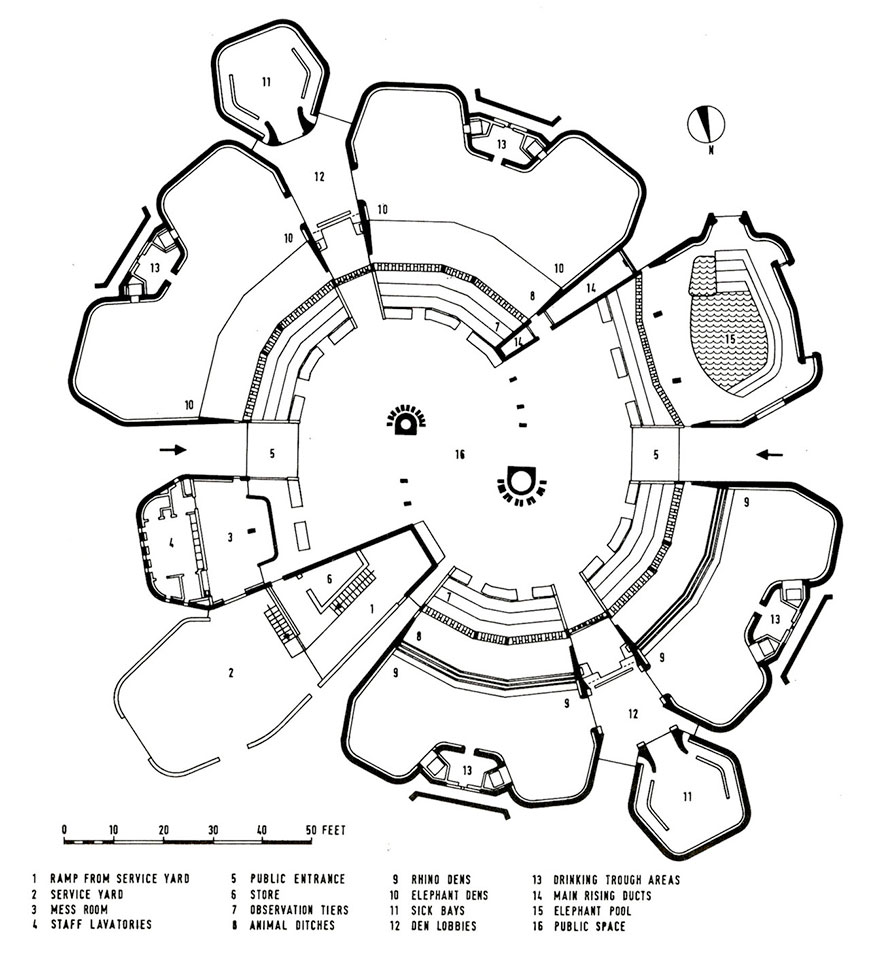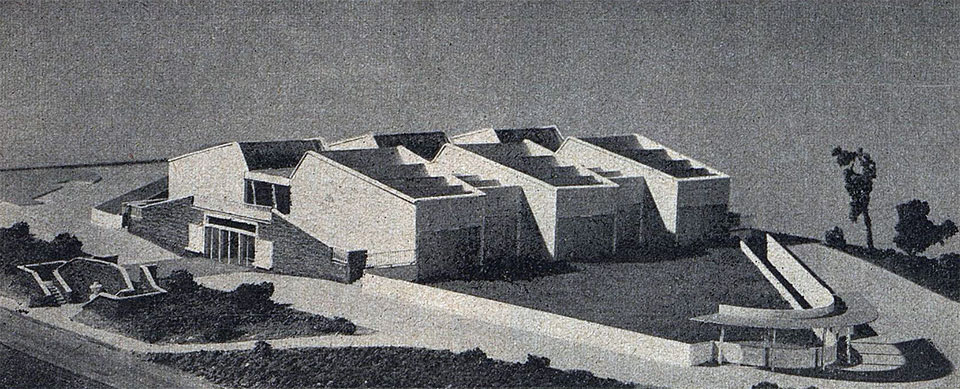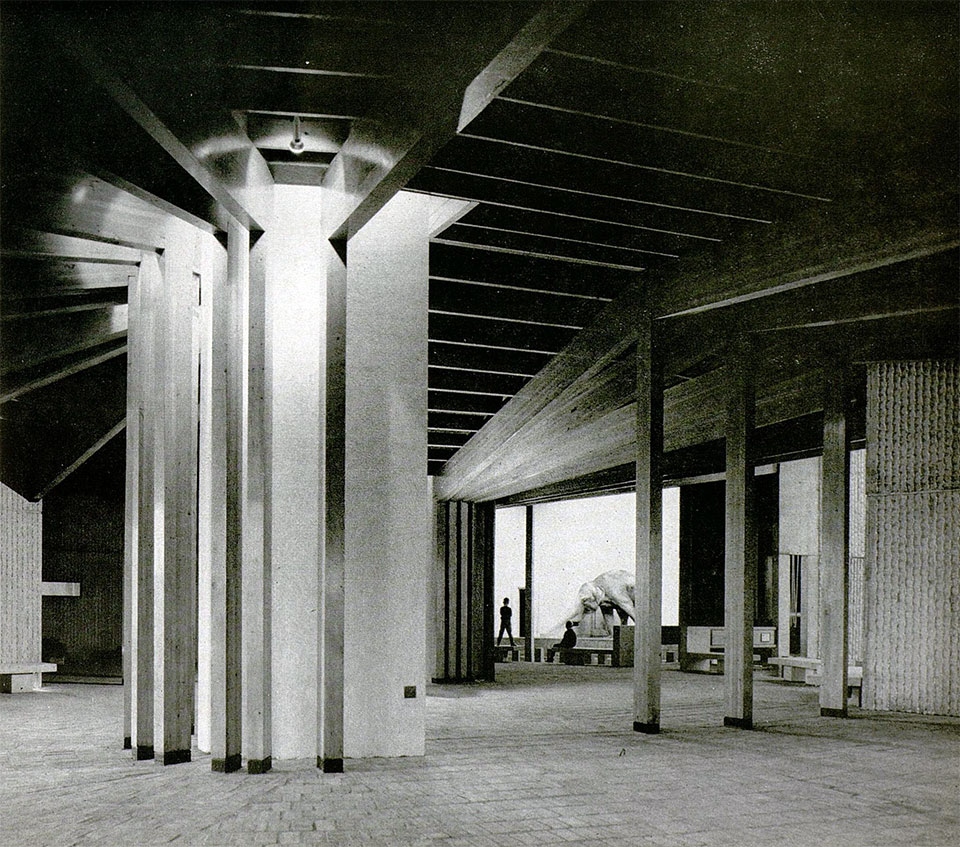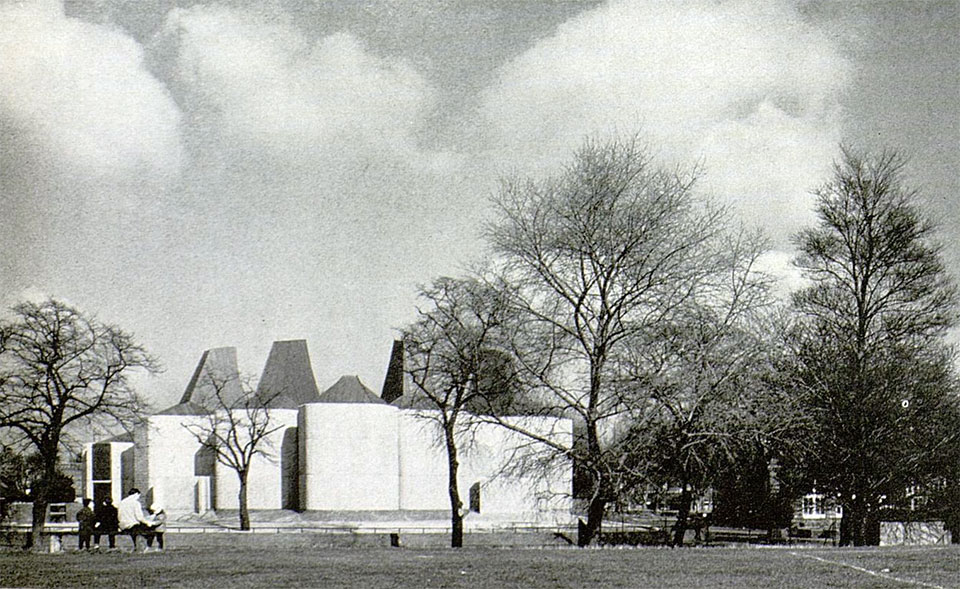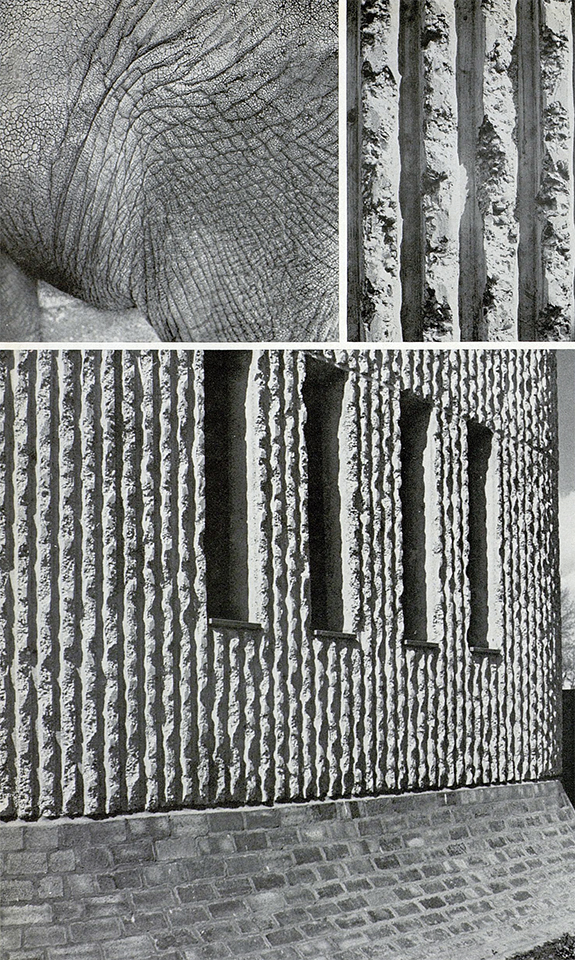Elephant House
1965
The elephant and rhinoceros pavilion was the first of the new buildings to be opened following Sir Hugh Casson and F.A.P. Stengelhofen’s development plan of 1956. The landscape architecture was by Sir Peter Shepheard and it was built by John Mowlem and Company with engineers Jenkins and Potter. An earlier proposal by Tecton commenced its construction in 1938, but stalled due to the outbreak of WWII and was subsequently abandoned altogether [1]. Casson declared his new scheme a ‘saucy building’ [2]. Set amongst other facilities described as ‘squalid’, the new home for elephants and rhinos was suitably robust. The massive curved precast walls, U shape in plan with a rough ribbed finish, certainly echoed the muscular hides of its their inhabitants, though J.M. Richards was keen to point out that it would be ‘an injustice to the architects’ to suggest that such an analogy was ‘their starting point’ – he viewed it as a favourably functional outcome that was ‘not just a fancifully moulded shape’ [3]. Prior to its opening, critics were attuned to the fact that this was more about putting the animals on display than it was affording them an appropriate home. Zoologist Desmond Morris argued that the sociability of the elephants meant they enjoyed the close setting and relationships with humans. Copper clad lanterns with oasthouse-like qualities cast light into the interior, where laminated pine beams and light grey-blue mosaic tiled walls were intended to create an atmosphere of a forest clearing. The building is set on a small mound formed from excavated soil to form a basement service area for plant and storage. A perimeter plinth of blue brick curves to blend with the paving of the same material, adding to the organic form. Its curving mass, elevated by bulbous ground, gives it a landscape quality and its silhouette is as powerful as its richly textured walls. The paddock pool was added in 1971 and in 1988 the Rhino moat was altered. The elephants and rhinos have been moved to more spacious accommodation at ZSL Whipsnade Zoo and the pavilion now houses bearded pigs, camels and pygmy hippos. It was Grade II* listed in 1998 [4].
[1] Architects’ Journal, 9 September 1948, p.247.
[2] Architects’ Journal, 24 March 1965, p.693.
[3] Architectural Review, July 1965, p.17
[4] https://historicengland.org.uk/listing/the-list/list-entry/1323694
